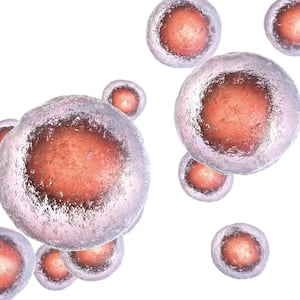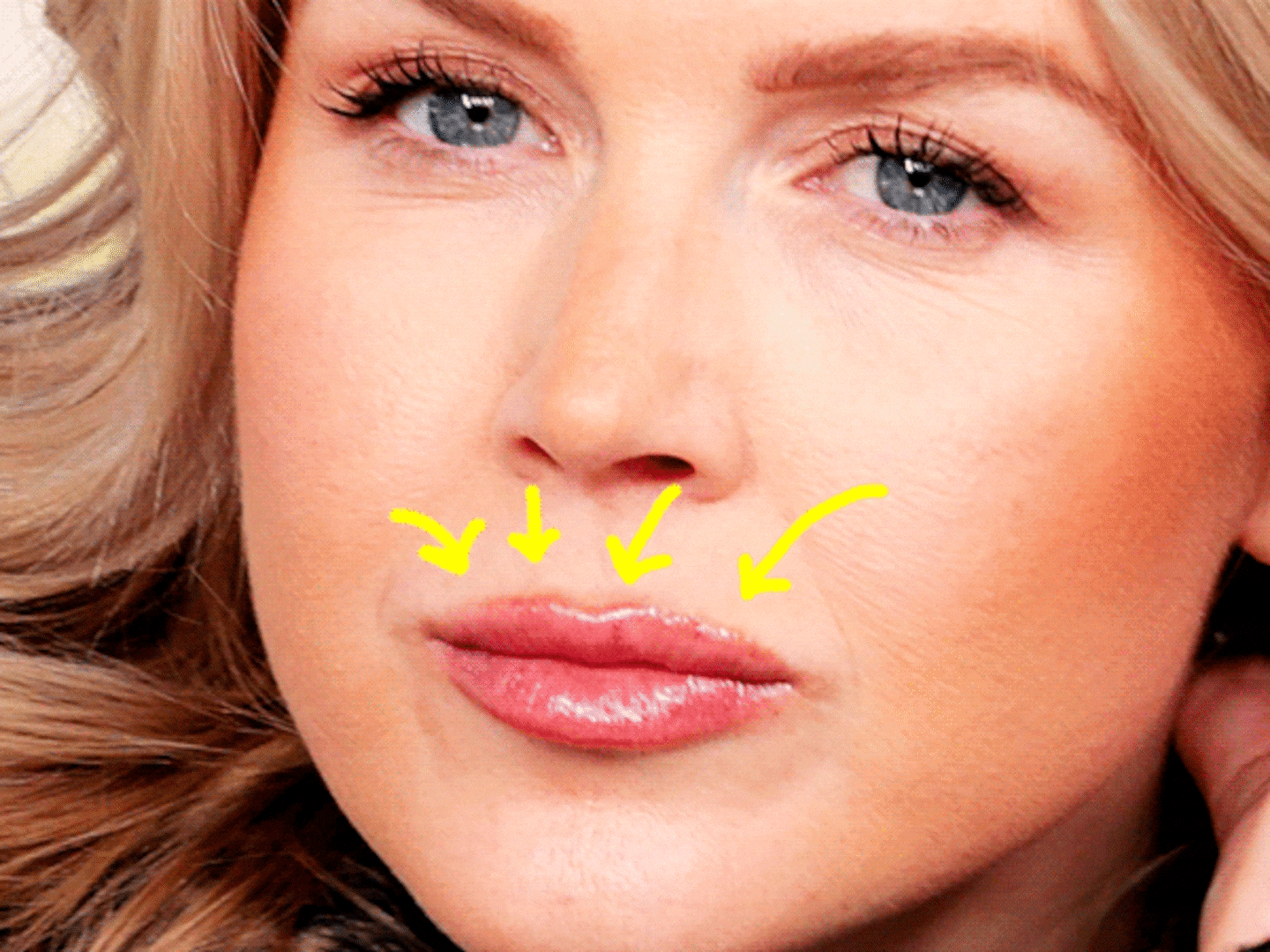Some time in the not-too-distant future, a patient who suffers a heart attack will spend time recovering in the hospital before a transplant. Oddly, though, their surgery date will be timed around a resupply mission to a space station. That’s because their new heart isn’t being driven or flown in from anywhere on Earth—rather, it’s been grown in space using stem cells.
While other scientists are set on discovering extraterrestrial life, some regenerative medicine researchers—scientists who study how to regrow and repair human tissue—want to create it themselves by growing stem cells in outer space. Their dream of establishing a biomanufacturing pipeline in low-Earth orbit sounds outlandish, but the commercial space age is enabling researchers to start turning it into a reality.
Induced pluripotent stem cells (iPSCs) are simple human cells that can grow into a number of complex organs. They’re derived from adult human skin or blood cells, in contrast to embryonic stem cells, which are found in an early stage of embryonic development. Due to limited space and personnel aboard the International Space Station, experiments that have grown iPSCs in microgravity have been expensive and rare. The few that have been conducted, however, seem to point to specific benefits to growing some cell types in low oxygen and microgravity that cannot be replicated on Earth. To longtime believers in space’s potential for stem cell research like Arun Sharma, a research scientist at Cedars-Sinai Medical Center’s Regenerative Medicine Institute, these studies feel like corroboration.
“When I first started doing this in the mid-2010s, there were very few other people in the stem cell field who were actually taking this seriously,” Sharma told The Daily Beast. “Now, there’s so many people who are wanting to get involved in this area: real major stem cell scientists, biomedical research entities—everybody’s wanting to get a piece of it.”
Sharma is no stranger to space. Having grown up in Huntsville, Alabama, the home of NASA’s Space Camp, he trained as a biologist but always kept a foot in space research. Now, he is the co-principal investigator of a recently announced two-year mission from NASA to hone in on the effects of microgravity on stem cells.
Historically, regenerative medicine researchers have aspired to conduct personalized cell therapy with iPSCs by injecting dysfunctional organs with stem cells grown from the patient’s own tissue—and regrowing entire organs. Even though salamanders and starfish can regrow limbs, harnessing stem cells for regeneration in humans at this scale has remained elusive, University of Pittsburgh surgery and bioengineering professor William Wagner told The Daily Beast. Instead, researchers are now focusing on the products that stem cells secrete like growth factors, a broad term for communication chemicals that cells emit to tell one another to grow faster or in a coordinated fashion. As it turns out, microgravity may affect these secretions in unknown ways.
“The one thing we absolutely need is numbers,” Wagner said. “There’s a continuum from discovery-type research to applied-type, and we’re still way over on the discovery side—and that’s where we should be.”
There’s early data to suggest the constraints of space may crank up iPSC’s productivity. For instance, stem cells exposed to low levels of oxygen put signals to heal, reproduce, and regenerate into overdrive. Wagner said that conditions in space are analogous in that way to vacuum chambers on Earth.
Additionally, stem cells typically don’t grow well in a petri dish. However, microgravity actually mimics some conditions in the human body, enabling stem cells to achieve truer-to-life three-dimensional growth. The resulting clumps of cells then may be able to mimic the dynamics of the body’s organs in a way that can be easily studied (such models were used early in the pandemic to study the effects of COVID on the lungs). If they become close enough to genuine human organs, 3D stem cell aggregates could even replace live animals in disease modeling research, Wagner said.
“Gravity is constantly pulling the cells onto the culture dish when we grow them,” Clive Svendsen, the director of Cedars-Sinai’s Regenerative Medicine Institute and Sharma’s co-principal investigator, told The Daily Beast. In contrast, microgravity on board the ISS or an orbiting satellite may allow researchers to keep the cells in an immature state for longer, where they are capable of becoming a range of different cell types. “That could be a whole new way to manufacture induced-pluripotent stem cells,” he said.
According to Wagner, research that hones in on these distinct benefits, coupled with a business model to commercialize findings, will be what’s needed to propel stem cell research into space. For now, though, the goals of Sharma and Svendsen’s NASA-backed mission are simple: measuring stem cell production, observing stem cells’ properties, and tracking how they develop into specialized cell types from their pluripotent starts.
The team’s upcoming mission hopes "to be a ‘reference mission’” that creates reliable, reproducible data, Sharma said. “We’re going to use this as a foundation for actual biomanufacturing, because it’s tough to make that jump from basic science to high-scale manufacturing without getting the basic science down pat.”
As this research moves forward, scientists are also working to solve what has been the biggest hurdle to conducting studies on stem cells in space: the fact that astronauts’ time on the ISS is limited and valuable. Training them to grow a single batch of stem cells, let alone the amount ideal for comparisons to Earth-grown cells, is prohibitively expensive, Svendsen said. That’s why he’s directing another mission launching in early June that will test out an automated system to grow bags of cells on the ISS. Currently, the researchers are making final preparations for June 7, the planned launch date of the experiment aboard a SpaceX resupply mission to the orbital outpost. Svendsen said the experimental design is simple. “We got the same bag on Earth and on the space station for four weeks,” he explained. We bring the bag back down and ask, ‘What happened? Did it grow better? Was it faster?’”
iPSCs grown in space won’t be hitting the clinic anytime soon, but automating their production could be perfected in as soon as five years, Wagner said. If it’s effective, robotic and AI-assisted technologies could even start to benefit stem cell research on Earth. For any investment to be worthwhile, though, there has to be a significant benefit to growing stem cells in microgravity versus on Earth. “If you take the skeptical view, you don’t know yet whether there’s any advantage,” Svendsen said, which is what upcoming experiments will aim to solve.
In many ways, now is the best time to answer these questions. Commercial space companies have lowered launch costs, making the process of sending experiments up into space the cheapest it has ever been. Plans for national and private space stations following the ISS’s decommissioning in a decade will provide even more “real estate” for research, Wagner said. These advances are making space newly accessible for biomedical and regenerative research.
“I think we’re very much in an exploratory phase,” Sharma said. “But I’m really optimistic that we’re going to be able to do something that's simply not possible on the ground.”








